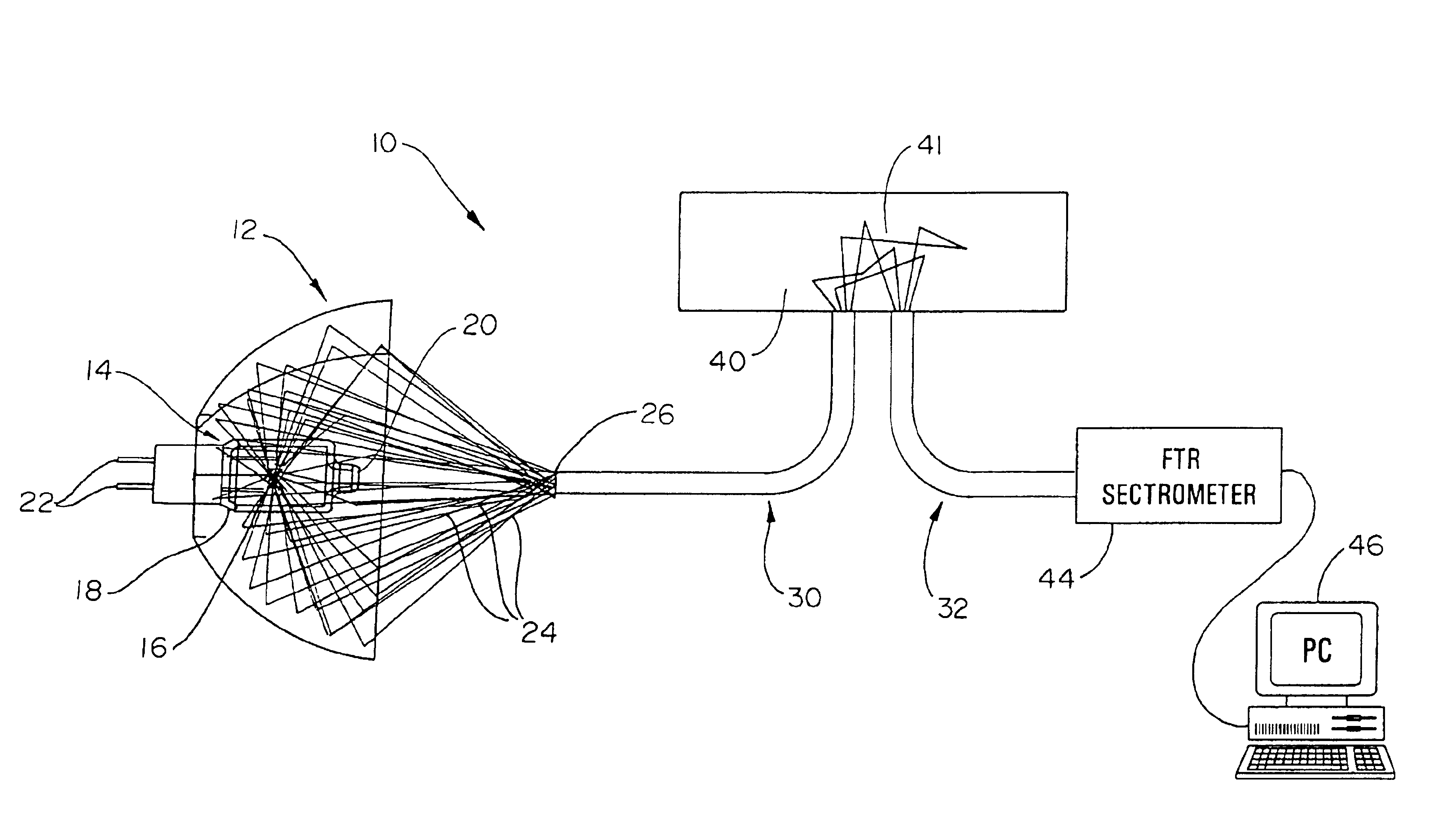Illumination device and method for spectroscopic analysis
a spectroscopic analysis and illumination device technology, applied in the field of diagnostic spectroscopy, can solve the problems of different non-uniform irradiance distributions and standard lamps producing non-uniform irradiance distributions
- Summary
- Abstract
- Description
- Claims
- Application Information
AI Technical Summary
Benefits of technology
Problems solved by technology
Method used
Image
Examples
Embodiment Construction
The following detailed description should be read with reference to the drawings, in which like elements in different drawings are numbered identically. The drawings, which are not necessarily to scale, depict selected embodiments and are not intended to limit the scope of the invention. Examples of constructions, materials, dimensions, and manufacturing processes are provided for selected elements. Those skilled in the art will recognize that many of the examples provided have suitable alternatives that may be utilized.
FIG. 1 shows a plan view of a near infrared radiation source lamp 14 known in the art. The appearance of a radiant source lamp 14 closely resembles that of a traditional residential light bulb. Traditional spectrophotometer lamps consist of a filament 16 housed within a transparent envelope 18, or the like. The transparent envelope 18 is either comprised of a silicate glass, fused silica or quartz material. The material used for the glass envelope 18 is dependent upo...
PUM
 Login to View More
Login to View More Abstract
Description
Claims
Application Information
 Login to View More
Login to View More - R&D
- Intellectual Property
- Life Sciences
- Materials
- Tech Scout
- Unparalleled Data Quality
- Higher Quality Content
- 60% Fewer Hallucinations
Browse by: Latest US Patents, China's latest patents, Technical Efficacy Thesaurus, Application Domain, Technology Topic, Popular Technical Reports.
© 2025 PatSnap. All rights reserved.Legal|Privacy policy|Modern Slavery Act Transparency Statement|Sitemap|About US| Contact US: help@patsnap.com



